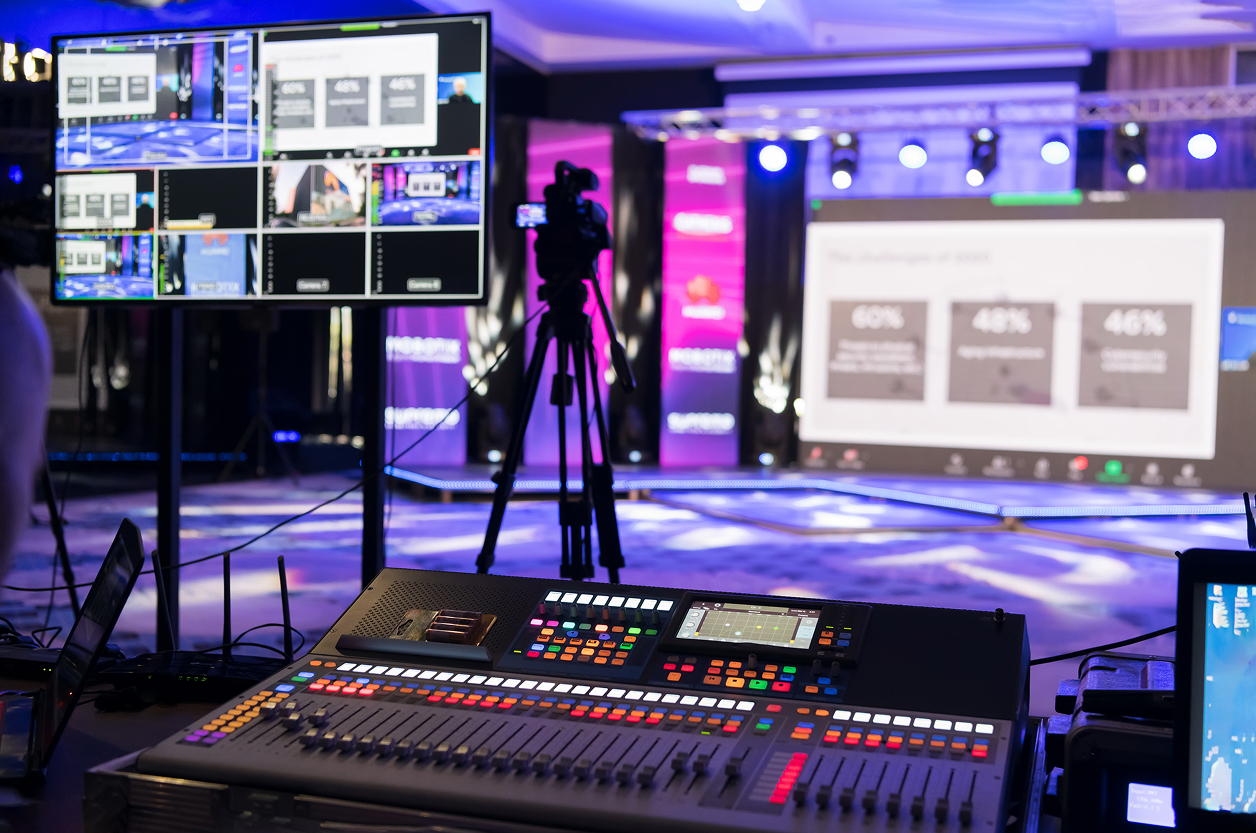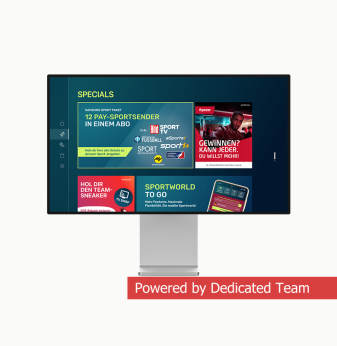Low-Latency Video Streaming: Engineering Solutions for Broadcast & ProAV

In a world increasingly dominated by real-time digital experiences, low-latency video streaming has become a foundational requirement for broadcasters and ProAV (Professional Audio-Visual) system developers. Whether it's a live sports broadcast, remote production, telemedicine, or interactive conferencing, even a delay of a few hundred milliseconds can significantly affect the user experience.
This article dives deep into the core engineering strategies and technologies used to minimize video latency. We’ll explore real-time data transport techniques, optimized hardware architectures, compression schemes, and synchronization models that enable sub-frame latencies — and why they matter.
Why Low Latency Matters
Latency is the time delay between the capture of a video frame and its presentation to the viewer. It becomes especially critical in scenarios where interaction or immediate feedback is needed:
- Live broadcasting (e.g., sports, concerts, news)
- Remote production and control
- Medical video (surgical robots, diagnostics)
- Video conferencing and education
- eSports and game streaming
Longer latencies introduce perceptible lags, leading to echo effects, lip-sync issues, and poor interactivity — all unacceptable in professional environments.
Key Sources of Latency in Video Systems
To address latency, engineers must first understand its origins across the full video pipeline:
- Capture latency – from camera sensor to frame buffer
- Compression latency – time taken to encode video (especially with high-efficiency codecs)
- Network latency – delays during IP transport, jitter buffering, retransmission
- Decoding latency – video decompression at the receiver
- Rendering latency – displaying frames on screen, synchronizing with audio
Each layer introduces overhead, and minimizing total system latency requires tuning all of them together.
Engineering Strategies to Minimize Latency
1. FPGA Acceleration for Real-Time Processing
Field Programmable Gate Arrays (FPGAs) allow engineers to offload compute-intensive tasks like video encoding, decoding, color space conversion, and scaling. Unlike CPUs or GPUs, FPGAs execute these operations in true parallel pipelines with deterministic timing.
Example use cases:
- JPEG XS compression (lightweight, visually lossless, ultra-low latency)
- Custom video transport protocols (e.g., ST 2110 encapsulation)
- Frame synchronization and timestamp handling
User question: How does FPGA reduce video latency compared to CPU/GPU?
Answer: FPGAs allow direct dataflow processing without operating system interruptions or driver overhead, enabling frame-by-frame video handling in microseconds. This deterministic behavior is ideal for sub-frame latency requirements in broadcast.
2. RDMA and GPUDirect for Direct Memory Transfers
Remote Direct Memory Access (RDMA) and GPUDirect technologies bypass traditional OS-level memory handling, allowing data to move directly from a camera or network interface into GPU memory or video encoders.
- RDMA: Often used with InfiniBand or RoCE (RDMA over Converged Ethernet), enabling near-zero-copy transfers.
- GPUDirect: NVIDIA technology that reduces latency in video pipelines involving AI or rendering on GPU.
User question: What benefits does GPUDirect bring to live streaming systems?
Answer: GPUDirect removes unnecessary memory copies between CPU and GPU, enabling faster frame availability for AI-based video analysis or rendering. This can reduce latency by several milliseconds per frame.
3. Low-Latency Compression Codecs
High-efficiency codecs like H.265/HEVC offer excellent compression ratios but at the cost of processing time. In contrast, JPEG XS or JPEG 2000 Ultra Low Latency (ULL) are designed specifically for low-latency transport:
- JPEG XS achieves visually lossless quality with sub-millisecond latency
- H.264 AVC with ultrafast preset is still common when using hardware encoders
User question: Which video codecs are best for low-latency professional AV applications?
Answer: JPEG XS is currently the top choice for broadcast-grade low-latency streaming, offering high visual fidelity and minimal buffering requirements. For consumer-grade AV, H.264 ultrafast presets with hardware support remain viable.
4. Transport Layer Optimization: ST 2110 & NMOS
SMPTE ST 2110 enables IP-based transport of separate video, audio, and ancillary streams, allowing fine-grained timing and minimal overhead.
NMOS IS-04/IS-05 adds discoverability and connection management, crucial for automated AV deployments.
Optimization strategies include:
- Clock synchronization using PTP (Precision Time Protocol)
- Minimizing packetization overhead with jumbo frames or zero-copy buffers
- Adaptive bitrate and congestion-aware routing
5. Hardware Time Sync and Lip-Sync Control
Precision timing between capture and display is essential for lip-sync and frame alignment across devices. This includes:
- Genlock between multiple video sources
- PTP hardware timestamping
- Audio/video sync buffers
Combined with FPGA timecode processing, these techniques enable seamless multi-stream AV experiences.
Case Example: Sub-Frame Latency in Remote Production
A major broadcasting client sought to reduce end-to-end latency for live sports production. Traditional SDI-based systems introduced >100ms delay due to encoding and switching.
Promwad engineering applied:
- FPGA-based JPEG XS encoding pipeline (under 1ms)
- ST 2110 IP transport with PTP sync
- GPUDirect AI-based scoring graphics overlay
- RDMA from acquisition to render node
Result: Achieved end-to-end latency of under 30ms, enabling frame-accurate remote control and commentary sync.
Challenges in Achieving Ultra Low Latency
- Buffering trade-offs: Lower latency often reduces protection against jitter
- Network stability: IP-based streaming is sensitive to congestion and loss
- Interoperability: Proprietary low-latency protocols complicate multi-vendor systems
- Hardware constraints: Not all endpoints support RDMA or FPGA acceleration
Still, each millisecond saved increases interactivity and realism.

The Role of Edge Processing & AI
With the rise of edge computing, AV systems can now incorporate on-device AI for tasks like:
- Real-time content moderation
- Frame quality analysis
- Automatic zoom/crop/track
- Noise reduction and upscaling
FPGAs and edge SoCs enable inference directly within the capture pipeline — shaving off additional round-trip time to the cloud.
Best Practices for Designing Low-Latency AV Systems
- Use hardware-accelerated encoding and decoding wherever possible
- Minimize buffer sizes throughout the pipeline
- Employ direct memory access techniques (RDMA, GPUDirect)
- Choose compression formats optimized for speed, not just quality
- Design network infrastructure with QoS and redundancy in mind
- Synchronize time across all devices using PTP
Final Thoughts
Low-latency video streaming is no longer a niche requirement — it's foundational for next-generation AV systems. Whether you're designing broadcast infrastructure, building ProAV devices, or developing streaming platforms, engineering for latency gives your users the edge they expect.
By leveraging modern hardware (FPGAs, RDMA, GPU pipelines), optimized protocols (ST 2110, JPEG XS), and edge AI capabilities, Promwad helps clients create systems that are not just fast, but also future-proof.
Need to reduce latency in your AV system? Let’s discuss your project and find the best engineering approach.
Our Case Studies








